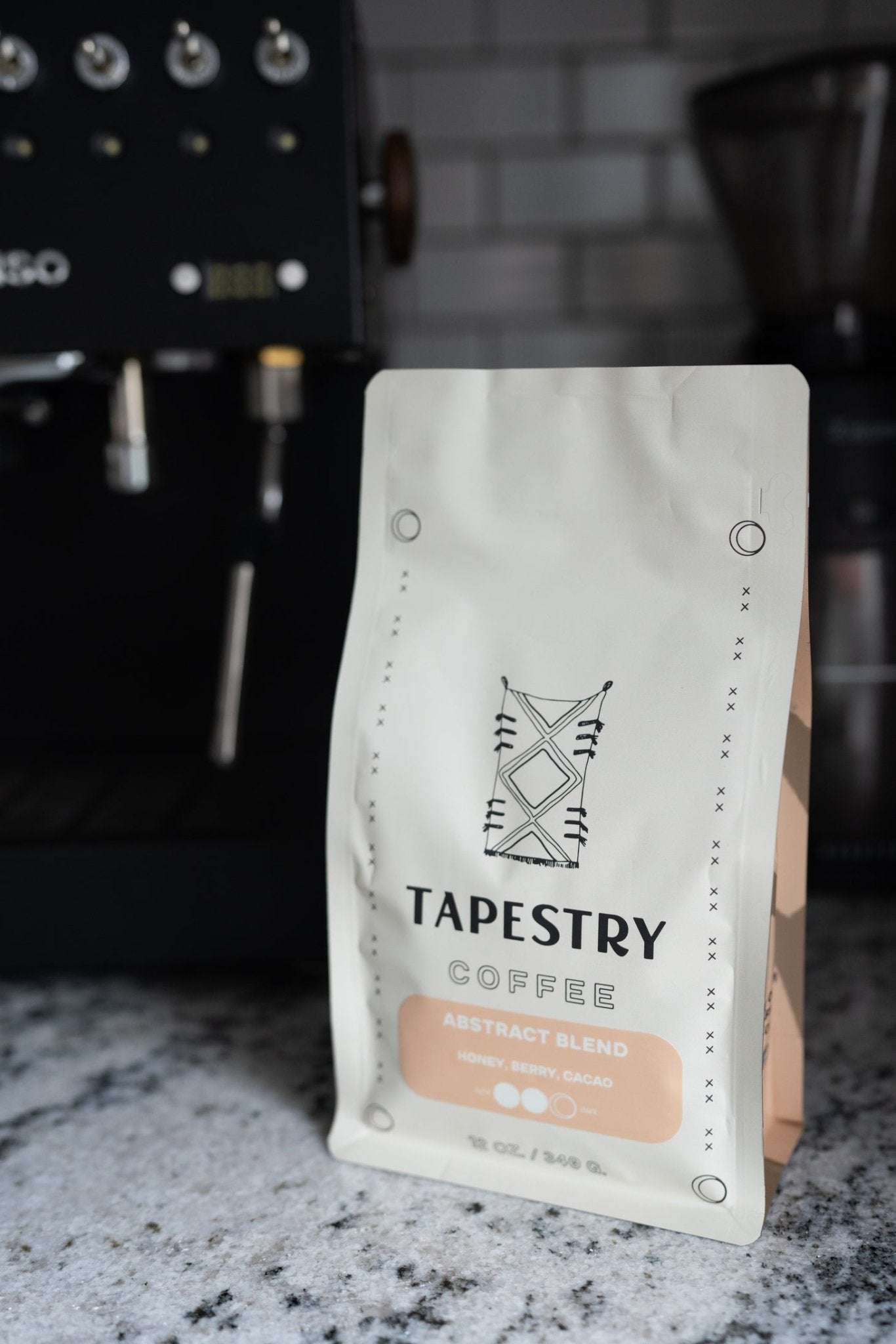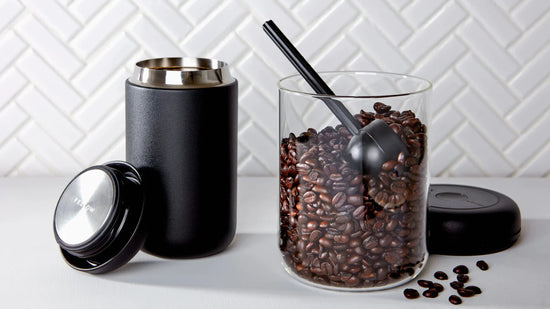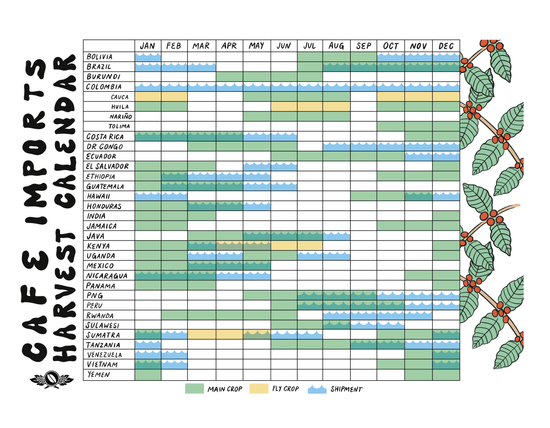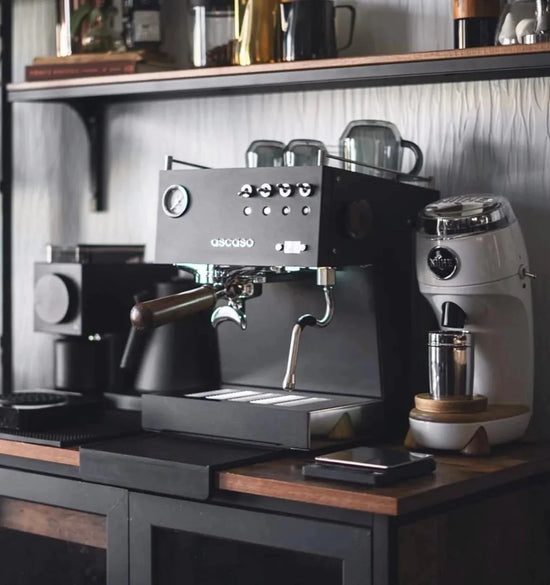Have you ever wondered why your cup of coffee gives you that extra boost in the morning or a pick-me-up in the afternoon? Well, it's all thanks to caffeine in coffee, a natural stimulant found in coffee. In this exploration, we're delving into the world of "How Much Caffeine is in Coffee." It's like unraveling the secrets of your favorite brew, understanding why some cups pack a punch while others are milder.

Picture this as a journey through the aromatic realms of coffee, where we'll unravel the science behind caffeine in coffee and dive into the different ways people make their daily dose. Whether you're a fan of quick and intense espresso shots or prefer the slow brew of a cold coffee, we're here to make this adventure easy to understand.
So, grab your favorite mug, settle in, and let's explore why your coffee is more than just a drink—it's a story waiting to be sipped. From the basics to the brewing methods, we'll uncover it all, one delightful sip at a time. Get ready for a journey where every cup tells a tale.
Understanding Caffeine Content in Coffee
Let's dive a bit deeper into why some cups of coffee make you feel more awake than others. You know that burst of energy you get after a sip? That's caffeine, the coffee superhero! But get this—it's not the same in every cup. The amount of caffeine in coffee depends on a few things, and we're here to break it down for you.
First off, different kinds of coffee beans bring different levels of caffeine in coffee to the party. Think of it like some beans are supercharged while others are more laid-back. And then there's the roasting and grinding part. It's a bit like cooking—sometimes you roast things longer to get different flavors, and that can affect the caffeine too.
So, when you take a sip of your coffee, it's not just about the taste; it's also about the caffeine journey. We're your guides through the coffee universe, helping you understand why your cup feels the way it does. Get ready to explore why your coffee is a bit like a magic potion, making your mornings and afternoons a little more lively.
Altitude and Origin: Impact on Caffeine Levels
Dive into the intriguing world of coffee, where altitude and origin play a role in the caffeine in coffee.

Altitude's Influence:
Imagine coffee farms perched high up in the mountains, where the air is crisp and the scenery breathtaking. Beans grown at higher altitudes undergo a slower maturation process. It's like the coffee cherries leisurely absorbing the mountain vibes. This unhurried growth often results in denser beans with more intricate flavors and, surprisingly, a tad less caffeine in coffee. So, when you enjoy coffee from a high-altitude region, like Ethiopia coffee, you might savor a delightful blend of flavors with a touch less kick.
Origin's Impact on Caffeine:
Coffee beans are storytellers, each region with its unique tale. The soil, climate, and local conditions contribute to the bean's personality. Beans from different countries not only vary in flavor but also in caffeine in coffee. For instance, beans from Brazil, known for its low-altitude coffee farms, might offer a mellow cup with a slightly higher caffeine kick. In contrast, beans from Ethiopia's Yirgacheffe region, where altitude is higher, may provide a more vibrant and complex flavor profile.
How much caffeine is in espresso?
Let's chat about espresso—the quick, strong shots of coffee that wake you up in a flash. Ever wonder why they feel so powerful? Well, it's because espresso is like a tiny but mighty caffeine punch! In a regular double shot of espresso, you can find about 120 to 170 milligrams of caffeine. That's like a little energy boost in a small cup!

However, espresso has one of the biggest variations in caffeine levels. Watch to see research from James Hoffman on the variation in caffeine levels.
Here's how it works: when you make espresso, hot water zooms through the coffee grounds super fast. This makes the coffee extra concentrated, like a burst of flavor in a small package. And because it's so concentrated, there's more caffeine in every tiny sip.
So, next time you're enjoying your espresso, remember it's a little coffee superhero. It might be small, but it packs a punch in the caffeine department, giving you a quick burst of energy. Stick around because we're going to explore more coffee styles and how they play with caffeine levels. Your coffee adventure is just beginning!
How much caffeine is in drip coffee?
Now, let's talk about drip coffee—the kind most folks brew at home or grab on the go. It's like your classic cup of joe. What's interesting is that drip coffee comes in different strengths—light, medium, and dark roast.
Here's the deal: the longer the coffee grounds spend time with hot water, the more caffeine they share. It's a bit like making tea, where the flavor gets stronger the longer the tea bag stays in hot water. So, for drip coffee, if it brews longer, it usually has more caffeine.

If you love a quick pick-me-up, a light roast might be your choice. But if you're into a richer, bolder flavor, a dark roast could be more your thing. Here's a fun fact: in a regular 8-ounce cup of drip coffee, you can find about 80 to 120 milligrams of caffeine. That's the range, and it's up to you to pick what suits your taste!
So, when you're sipping your drip coffee, remember that the strength can vary, and it's all about finding what you enjoy.
How much caffeine is in French press coffee?
Alright, let's talk about French press coffee—it's like the cool, laid-back cousin of the coffee world. Making coffee with a French press is pretty simple. You mix coffee grounds with hot water and let them hang out for a bit. It's like giving them time to mingle and create a smooth, flavorful dance.
Here's the fun part: because the coffee grounds chill in hot water for a longer time, French press coffee tends to have a bit more caffeine. It's like letting the coffee party go on for a little longer! In a regular 8-ounce cup of French press coffee, you can find about 80 to 120 milligrams of caffeine. So, it's kind of like a mid-range caffeine experience.
When you're sipping your French press coffee, know that it's like the easygoing buddy of the coffee family, offering a bit more caffeine without being too intense.
How much caffeine is in a pour over coffee?
Now, let's chat about pour-over coffee—picture it as the calm, steady friend in the coffee crew. Making pour-over coffee is like a slow and thoughtful process. You pour hot water over coffee grounds, letting the flavors bloom and create a smooth taste.
Here's the scoop: because pour-over coffee takes its time, it can have a range of caffeine. In a regular 8-ounce cup, you might find about 70 to 140 milligrams of caffeine. It's like a caffeine journey with a bit of variety!
How much caffeine is in cold brew coffee?
Alright, let's talk about cold brew coffee—it's like the chilled-out rebel of the coffee family. Making cold brew is a breeze. You mix coffee grounds with cold water and let them hang out for a good while. It's like a slow dance, where the coffee gets to chill and develop its flavors without any rush.

Now, here's the cool part: because cold brew takes its sweet time, it often has more caffeine per ounce. In a regular 8-ounce cup of cold brew, you might find about 100 to 200 milligrams of caffeine. Yep, that's a bit on the higher side, making it a stronger caffeine player!
How much Caffeine is in AeroPress Coffee?
Let's chat about AeroPress coffee—it's like the versatile artist in the coffee gallery. Making coffee with an AeroPress is simple and fun. You mix coffee grounds with hot water and use a little pressure to create a smooth brew.
Now, here's the interesting part: because AeroPress is quick, it can have a range of caffeine. In a regular 8-ounce cup, you might find about 80 to 120 milligrams of caffeine. It's like a middle-of-the-road caffeine experience!
Decaffeinated Coffee: How is it Done?
Let's dive into decaffeinated coffee—it's like the caffeine-free cousin of the coffee family. Making decaf coffee is a bit special. Coffee beans go through a process to remove most of the caffeine, making it a choice for those who want the taste without the buzz.
Here's the simple scoop: there are different methods to decaffeinate coffee, and each one is like a little spa day for the beans to wash away the caffeine. Let's break down the popular methods:
- Water Process:
- Imagine soaking the beans in water to dissolve the caffeine. It's like a gentle cleanse. This method is known for being natural and chemical-free.
- Solvent Process:
- Here, the beans take a bath in a solvent (a special substance) that grabs the caffeine. It's like a caffeine magnet! Common solvents include ethyl acetate and methylene chloride. The beans are then washed, leaving behind decaffeinated goodness.
- Carbon Dioxide (CO2) Process:
- Picture using carbon dioxide to pull out the caffeine. It's like a fizzy extraction. The CO2 interacts with the caffeine, and when it's removed, you're left with decaf coffee. It's a clean and efficient method.
Now, here's the fun part: decaf coffee still has a bit of caffeine, but way less than regular coffee. In a regular 8-ounce cup, you might find about 2 to 5 milligrams of caffeine. That's like a tiny whisper of caffeine!




